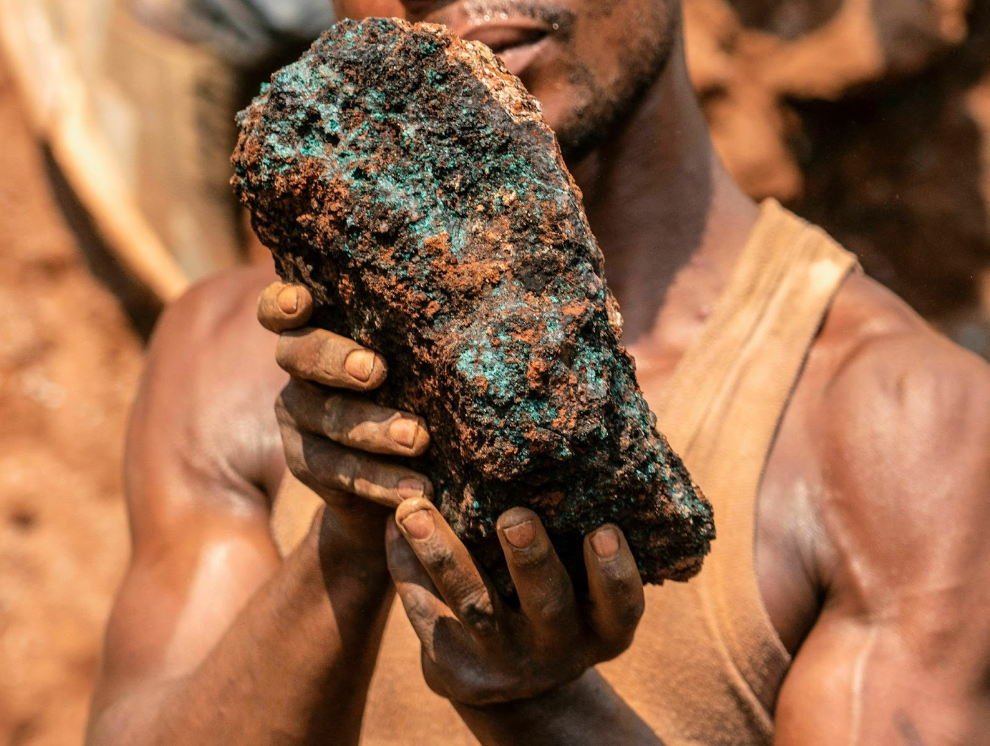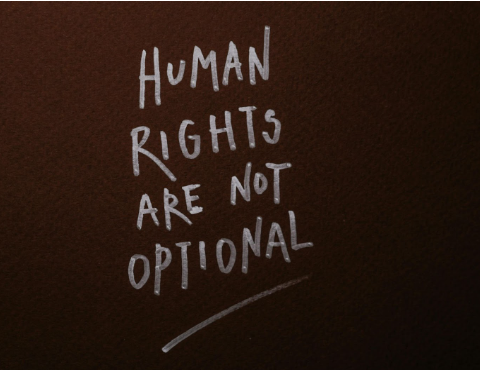By Katie Kress

As awareness of the global climate crisis has increased, so has popular support for electric vehicles (EVs). Fossil fuel emissions from non-electric vehicles are a massive contributor to the climate crisis; greenhouse gas emissions from transportation are responsible for the largest share of greenhouse gas emissions in the United States. Though the EV movement has been embraced as a vital step in addressing the climate crisis, the movement has far-reaching, often unseen human rights implications. Forced labor, child labor, and sexual abuse are all common occurrences at one of the most important locations for the production of electric vehicles: cobalt mines in the copper belt of Africa.
The first steps toward the electric vehicle were in the 1800s, following the creation of the battery and the electric motor. The first successful electric cars were built in the final decade of the century, sparking the first stages of the electric vehicle movement. Though the strength of the electric vehicle movement dipped dramatically in the 1910s following the large-scale production and widespread sale of Henry Ford’s Model T, interest finally increased during the gas shortages of the ‘60s and ‘70s. Roughly 20 years after the gasoline shortage and subsequent increase in gasoline prices, the movement was reinvigorated by the Clean Air Act Amendment and the 1992 Policy Act. As a result of widespread transportation emissions regulations, auto companies began manufacturing more – and better – EVs.
Understanding how EVs function is vital to understanding the human rights implications of the movement. The use of lithium-ion batteries, for which cobalt is a critical component, is the main culprit of the human rights concerns related to EVs. However, without cobalt, the batteries that power electric vehicles wouldn’t be able to drive as far, last as long, charge as fast, or be as stable.
The Democratic Republic of the Congo (DRC) – located in what’s known as the “copper belt” in Africa – is one of the most resource-rich nations in the world. The resource abundance in the Congo led to its colonization by the Belgians in the 19th century. Since, the nation has been plagued by exploitation of its resources leading to incredible levels of poverty among the people of the DRC. This exploitation is largely due to the abundance of cobalt as the country has the largest reserves of cobalt in the world.
Artisanal small-scale mining (ASM) – mining by individuals and groups rather than corporations – is supposed to make up only a small, highly regulated portion of the cobalt mining in the Congo. Despite this, the proportion of cobalt mined through ASM is overwhelming. It is in the areas rife with artisanal small-scale miners rather than industrial mining where the most human rights abuses take place.
Because of the extreme poverty faced by many Congolese people – due in part to government corruption – many children are forced to work in these mines; roughly 40,000 children, as young as six, work in ASM. As a result, few children receive adequate education. Miners typically earn less than $2 per day and are made to take part in back-breaking labor and expose themselves to toxic substances in the process. Deaths due to tunnel collapses are common, as is sexual assault of women and girls. Miners, however, have nowhere else to turn. Jobs are scarce and the demand for cobalt is ever-increasing, though miners’ wages are not. While some changes have been made to this process – the Congolese government has adopted a mining code and is setting aside more land for formal ASM – progress has been slow. However, some companies have started trying to formalize ASM projects, by regulating mining methods and working conditions. Standards for mine safety and child labor must be established to ensure responsible cobalt sourcing. Even though most of the change that needs to happen is at the company or government level, people can still help make a change in this area. By naming and shaming corporations that use cobalt from artisanal small-scale mines, those disconnected from the mining industry and the DRC can make an impact. It is vital to address climate change, but it is just as important to ensure that we are not enabling practices that blatantly violate human rights in the process.
Photo Credit: https://www.npr.org/sections/goatsandsoda/2023/02/01/1152893248/red-cobalt-congo-drc-mining-siddharth-kara

